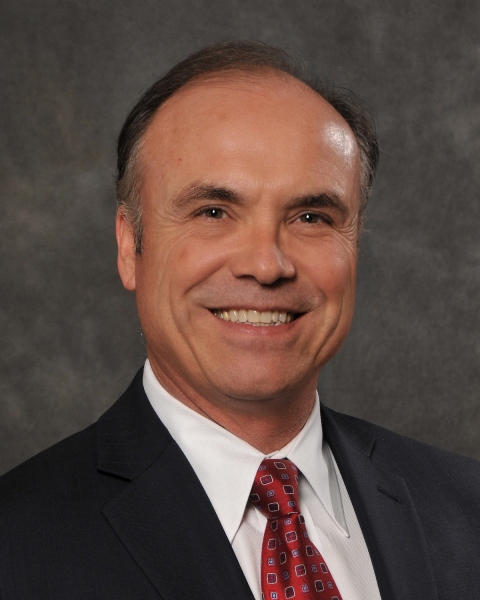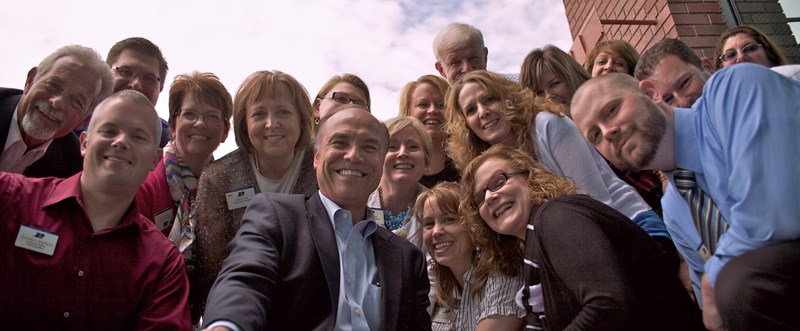Rudy Pereira has long known a credit union’s processes and people are at the core of a credit union’s success.
The president and CEO of Royal Credit Union ($1.6B, Eau Claire, WI) joined the credit union industry in 1990 after six years as a systems engineer and software programmer with Hewlett-Packard and Hughes Aircraft, respectively, in California.
By the time he made the move to Royal from Alliant Credit Union ($8.5B, Chicago, IL) in 2012, where he had been a senior vice president and chief information officer, Pereira had served in operations, strategic planning, and technology positions as well as interim CEO at several credit unions.
 |
| Rudy Pereira, president/CEO, Royal Credit Union |
Pereira’s work in credit union associations and vendor panels has helped shape the integration of technology especially core processing systems with the business side of credit unions. He is a longtime leader in the CUNA Councils and also works closely with Fiserv, the provider of Royal’s DNA system. He also is an executive who has made the move from the server room to the boardroom. Here, he offers insight on how to make core processing work across the credit union.
The DNA system gained traction for its ability to add third-party ancillary services. How has Royal worked to maximize that functionality?
Rudy Pereira: Open Solutions [OSI] had good intentions with DNA, but it wasn’t as easy or open as had been promised. When I first arrived at Royal, we weren’t maximizing the system, partly because we did not have the technical talent to fully do that.
CU QUICK FACTS
ROYAL CREDIT UNION
Data as of 09.30.15
- HQ: Eau Claire, WI
- ASSETS: $1.6B
- MEMBERS: 165,212
- BRANCHES: 51
- 12-MO SHARE GROWTH: 10.04%
- 12-MO LOAN GROWTH: 13.19%
- ROA: 1.37%
- Core Processor: Fiserv DNA
We had started to look at alternatives when Fiserv bought OSI [in 2013]. Fiserv killed Acumen [its platform that competed with DNA], which was a gutsy move by CEO Jeff Yabuki. That gave us confidence Fiserv would improve DNA, and it is getting better.
The support we’re getting from legacy OSI management along with the financial and strategic support of Fiserv is enabling us to maximize the promise of openness and our ability to meet the needs of our members by using best-in-class solutions in a competitive business.
How does your perspective as a technologist inform your thinking when you look at how core technology affects and empowers your organization?
RP: The financial services industry has become dependent on its ability to deliver member-centric solutions and services that, at the core, require technology skill and capability. IT knowledge helps me better guide our organization as we compete against traditional financial services companies and, even more importantly, the non-traditional companies that are making their way into our space.
I have an intrinsic paranoia to change and improve, which was instilled in me as a technologist when I worked for Hewlett-Packard. Change is non-negotiable. Adapting and excelling in change is key to success.
How does Royal determine how well it is using its core system?
RP: We’ve used vendor assessments in the past, but for continuous improvement, you have to own the responsibility to keep up with vendor updates and opportunities. I belong to a CEO collaboration for in-house DNA users and we have team members that sit on technical advisory committees.
The more we get out of the core the more we are willing to tell others, which helps the core and helps us because a strong core is one that can continually invest in itself.
How do you use internal and external experts across silos to get to the best solution?
RP: We’ve worked hard to create a high level of engagement at Royal, and I’ve found it most beneficial to go to the experts to help us design a solution. Solutions are usually best when they originate with the business line that owns the idea. That way, IT and the system become the enabler. What I’ve seen fail in the past is: Tell me what the system can do, and let’s pick an idea to implement. That’s void of a business strategy and not likely to produce the best solution.
Can you provide a specific example of how business line origination works?
RP: Data warehousing is a great example. For years at Alliant, our thought in IT was that it would be a competitive advantage to have a data warehouse. Each year, we killed the initiative at budget due to costs and lack of organizational interest. It wasn’t until finance and marketing became the initiative’s owners that a data warehouse was ultimately approved. IT then had the vital role of helping to select, implement, and maintain that data warehouse.

CEO Rudy Pereira says surrounding himself with a great team is the secret to success at Royal Credit Union.
How do you decide between what does and does not need to be done with the core system?
RP: The answer is fairly simple yet very complex to achieve. What needs to get done is everything and what should get done are a few initiatives that align to the business strategy.
At Royal, we have five-year goals that focus on experience, efficiency, and value. We’ve also identified six capabilities that require development that hedge against uncertain futures. We then match the key enterprise initiatives not the keep-the-lights on projects against our five-year goals. Those that help drive a goal forward are approved. An operational committee made up of cross-functional leaders ensures a project has the necessary funding and talent to complete the initiative.
Know the core system it’s a business tool and not just IT’s domain.
How do you get your core processor to do what you need done?
RP: Make sure you have a core processor that is willing to listen and wants to make things happen. I believe we have that with ours.
A true partnership is a win-win. The more we get out of the core the more we are willing to tell others, which helps the core and helps us because a strong core is one that can continually invest in itself.
What are a few best practices or pieces of advice for how to make the most of a core system?
RP: Know the core system it’s a business tool and not just IT’s domain.
I’ve seen several conversions happen because the credit union felt its core system could not meet its existing need when in fact the core could through something that was available two releases ago. The relationship gets strained and someone of influence believes it’s time for a change, and that begins an avalanche of support to do just that.
Drill into those release notes. Overtly decide whether to accept a process change. Go to conferences and regional group meetings. Develop a network of fellow core members.
One of the beautiful things about our industry is the collaboration and willingness to share. I have started doing this with seven other credit unions in Minnesota to look at ways we can collaborate on projects using the same core.
What is one thing to avoid?
RP: Don’t buy into the misconception that a technology tool will solve all your problems. Always come from an understanding of what the business problem is first and last.
You Might Also Enjoy
- Increased Competition Fuels Core Market Share Gains And Losses
- Why Did This Alabama Credit Union Take Back Its Core?
- Outsourcing Offers Silent Nights For A Texas Credit Union
- How To Extract Maximum Value From Core Processing
<
